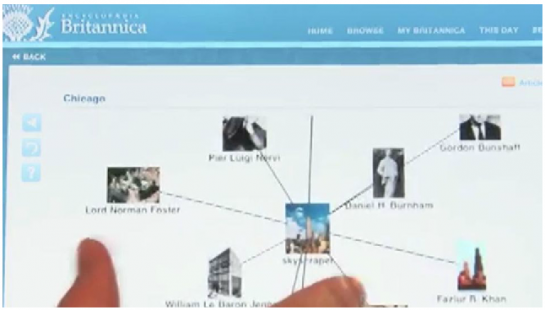Community Embraces New Word Game at Mid-Year Play Day This past Sunday, families at Takoma Park’s Seventh Annual Mid-Year Play Day had the opportunity to experience OtherWordly for the first time. Our educational language game drew curious children and parents to our table throughout the afternoon. Words in Space Several children gathered around our iPads […]
Read more
Encyclopaedia Britannica Now Fits Into an App
SEPTEMBER 28, 2011 AT 6:02 PM PT
 by Walt Mossberg
by Walt Mossberg
The Encyclopaedia Britannica has been the most prestigious general encyclopedia in the English language for what seems like forever. But it has always been expensive, and a bit stodgy. Today, when people need to look up information, they’re likely to just do a Web search, or to consult the free, community-written, online encyclopedia, Wikipedia.

The Britannica, however, isn’t going away, or ignoring the digital world. It has long had a paid website. When it comes to school research, it is often trusted by many teachers and parents over less rigorously vetted sources. And now, it is about to launch a slick iPad app containing its entire content at a greatly reduced price: $2 a month, or $24 a year, versus $70 a year for the Web version and about $1,400 for the venerable print version. (People who pay for the Web version also get access to the iPad app at no extra cost.)
I’ve been testing this new iPad app, and I like it. It is much cleaner and more attractive than the cluttered Britannica website and sports some nice features, including a dynamic “link map” showing the relationship between topics in a visual format. Unlike the Web version, it is free of ads. The app is expected to be available in a couple of weeks.
Whether or not this new Britannica app is for you will be a personal decision based on what you’re looking for; and how much you value an edited, highly curated source over the broader, more easily updated, but crowd-sourced, Wikipedia, which also is available via a variety of iPad apps. Of course, many subscribers to Britannica will still use Wikipedia or other Web sources for research.
 An icon at the top of an article generates a link map, a spider web of icons representing other articles related to the one you were reading.
An icon at the top of an article generates a link map, a spider web of icons representing other articles related to the one you were reading.Since I don’t presume to be an academic expert, for this review I focused mostly on the experience of using the forthcoming Britannica app, rather than attempting to analyze its contents. Still, some content comparisons with Wikipedia are useful to keep in mind.
The Britannica app contains 140,000 articles. Wikipedia has about 3.7 million. Many contemporary topics, like the latest in pop culture, or some current public figures, are included in Wikipedia, but missing from Britannica. For instance, the widely praised and popular TV show “Modern Family” gets lavish coverage in Wikipedia, but doesn’t make the cut in Britannica.
On the other hand, there are some topics in Britannica’s smaller collection of articles that I couldn’t locate in Wikipedia. One example: an article on Suzanne Douvillier, described by Britannica as “probably the first woman choreographer in America.”
And Britannica has many articles written by credentialed academics, journalists and other experts, while it can be difficult to discern the credentials, or even the real name, of a Wikipedia contributor.
The forthcoming Britannica iPad app, which also is slated to appear later in an iPhone and Android version, is handsome and colorful. It’s free to download and offers a small amount of free content, even for nonsubscribers. But the vast majority of its content is accessible only to subscribers.
Perhaps the coolest feature is the link map, triggered from an icon at the top of each article page. This generates a spider web of icons representing other articles related to the one you were reading.
For instance, the link map for the article on Apple Chairman Steve Jobs spawns tendrils leading to articles on things like “personal computer” and “software.” If you then tap on say, “software,” more tendrils appear, leading to topics like “Bill Gates” or “open source.” You can tap on any of the icons to read the underlying article.
This kind of visual array of related items isn’t a new idea. In fact, there is an iPad app called WikiNodes which does something similar for Wikipedia content. But Britannica has implemented the idea nicely.
The home page of the Britannica app features a large daily color photo with an accompanying free article related to the picture. For instance, a photo of the Croatian National Theatre links to a free article on the country’s capital, Zagreb.
Also on the home page is an event that occurred that day, such as the birth of the actress Brigitte Bardot, which can be tapped to reveal an article about her.
In addition, the home page features a large search box for looking up topics and three links in a section labeled “Browse.” One, called “A-Z,” allows you to just leaf through the Britannica alphabetically. Another, called Top Articles, includes 100 free articles on popular topics like the “Amazon River,” “the Beatles,” “the French Revolution” or “William Shakespeare.” The third is an expanded list of events and births that occurred on the day you are using the app.
Beyond the couple of free home page articles and the 100 free top articles, nonsubscribers will only see the first 100 words or so of each article.
When viewing an article, you can read through it by merely swiping from page to page, a process I found quick and reliable. A progress bar and page number shows where you are in an article, but there is no bookmark feature. The font size can be increased or decreased.
To the left of each article, there are icons that allow you to save it for offline reading, mark it as a favorite, or email a link to the Web version of that article, which can be read even by a nonsubscriber. A section of the app called My Britannica lists all your saved, favorite and recently viewed articles. I found all of this easy to discover and use.
At the top of each article, there are icons that, when tapped, display the table of contents for the article, and a gallery of images from the article, expanded to a larger size.
I found some things missing from the app, including some features that are present in Britannica’s website.
The most glaring omission is the lack of links to related sources outside the encyclopedia. There are also no videos in the app. And you can’t print articles from the app, though Britannica says it plans to add printing and the ability to post references to articles to social networks.
Especially for students, or anyone who values what Britannica has to offer, I found the new Britannica iPad app to be a pleasing, easy way to navigate through a large body of knowledge.
Email Walt at mossberg@wsj.com.

